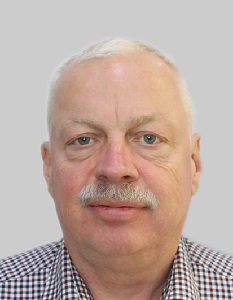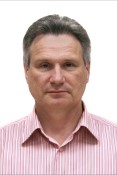О ПОДХОДЕ К ПРОТИВОДЕЙСТВИЮ УТЕЧКЕ ИНФОРМАЦИИ ПО СКРЫТЫМ КАНАЛАМ
Аннотация
Ключевые слова
Полный текст:
PDFЛитература
1 Department of defence standard. Department of defence trusted computer system evaluation criteria. 1985.
2 Bishop M. Computer security: art and science. Boston: Addison Wesley professional, 2002.
3 Helouet L., Jard C., Zeitoun M. Covert channels detection in protocols using scenarios // Proceedings of the 2003 workshop on security protocols verification. 2003. P. 21-25.
4 Kemmerer R. A. Shared resource matrix methodology: an approach to identifying storage and timing channels // ACM Transactions on computer systems. 1983. Vol. 1. № 3. P. 256-277.
5 Denning D. E. A lattice model of secure information flow // Communications of the ACM. 1976. Vol. 19. № 5. P. 236-243.
6 Porras P. A., Kemmerer R. A. Covert flow trees: a technique for identifying and analyzing covert storage channels // Proceedings of the 1991 IEEE Computer society symposium on research in security and privacy. 1991. P. 36-51.
7 Tsai C.-R., Gligor V., Chandersekaran C. A formal method for the identification of covert storage channels in source code // Proceedings of the 1987 IEEE Computer society symposium on research in security and privacy. 1987. P. 74-87.
8 Schaefer M., Gold B. B., Linde R., Scheid J. Program confinement in KVM/370 // Proceedings of the 1977 ACM Annual conference. 1977. P. 404-410.
9 Karger P. A., Wray J. C. Storage channels in disk arm optimization // Proceedings of the 1991 IEEE Computer society symposium of research in security and privacy. 1991. P. 52-61.
10 Wang C., Ju S. Searching covert channels by identifying malicious subjects in the time domain // Proceedings of the fifth annual IEEE SMC Information assurance workshop. 2004. P. 68-73.
11 Tsai C.-R., Gligor V. A bandwidth computation model for covert storage channels and its applications // Proceedings of the 1991 IEEE Computer society symposium on research in security and privacy. 1988. P. 108-121.
12 Shannon C. E., Weaver W. The mathematical theory of communication. Urbana: The University of Illinois press, 1964.
13 Millen J. Finite-state noiseless covert channels // Proceedings of the 1989 Computer security foundation workshop. 1989. P. 81-85.
14 Cabuk S. Network Covert Channels: design, analysis, detection, and elimination. For the degree of doctor of philosophy. Indiana: Perdue University, 2006.
15 Moskowitz I. S., Miller A. R. Simple timing channels // Proceedings of the 1994 IEEE Computer society symposium on research in security and privacy. 1994. P. 56-64.
16 Moskowitz I. S., Greenwald S. J., Kang M. H. An analysis of the timed Z-channel // Computer society symposium on research in security and privacy. 1996. P. 2-11.
17 Costich O. L., Moskowitz I. S. Analysis of a storage channel in the two-phase commit protocol // Proceedings of the fourth computer security foundation workshop. 1991. P. 201-208.
18 Golomb S. W. The limiting behavior of the Z-channel // Proceedings of the 1980 IEEE International symposium on information theory. 1980. P. 372.
19 Moskowitz I. S., Kang M. H. Covert channels - Here to stay? // Proceedings of the Ninth Annual Conference on computer assurance. 1994. P. 235-244.
20 Hu W.-M. Reducing timing channels with fuzzy time // Journal of computer security. 1992. Vol. 1. № 3-4. P. 362-372.
21 Kang M. H., Moskowitz I. S. A pump for rapid, reliable, secure communication // Proceedings of the first ACM Conference on computer and communications security. 1993. P. 119-129.
22 Kang M. H., Moskowitz I. S. A data pump for communication. Washington: Naval research laboratory, 1995.
23 Kang M. H., Lee D. C., Moskowitz I. S. A network version of the pump // Proceedings of the 1995 IEEE Computer society symposium on research in security and privacy. 1995. P. 144-154.
24 Архангельская А. В., Архангельский В. Г., Калмыков В. В. О разработке архитектуры шлюза однонаправленной гарантированной передачи данных // Методы и технические средства обеспечения безопасности информации: Материалы 22-й научно-технической конференции. СПб.: Изд-во Политехн. ун-та, 2013. С. 52-55.
25 Shieh S.-P., Gligor V. D. Auditing the use of covert storage channels in secure systems // Proceedings of the 1990 IEEE Computer society symposium on research in security and privacy. 1990. P. 285-295.
26 ГОСТ Р 53113.2-2009. Информационная технология. Защита информационных технологий и автоматизированных систем от угроз информационной безопасности, реализуемых с использованием скрытых каналов. Часть 2. Рекомендации по организации защиты информации, информационных технологий и автоматизированных систем от атак с использованием скрытых каналов. Введ. 2009-12-01. М.: Стандартинформ, 2010.
Ссылки
- На текущий момент ссылки отсутствуют.

Это произведение доступно по лицензии Creative Commons «Attribution» («Атрибуция») 4.0 Всемирная.




